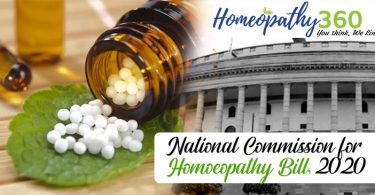
Abstract
Tinea cruris is a common dermatological infection that we encounter in our clinics. A case of 35-year-old female visited OPD with complaint of lesions and itching in the gluteal region. After proper case taking, analysis, and repertorisation, Pulsatilla nigricans 200 single dose was prescribed followed by placebo. The remedy showed marked improvement in the sufferings of the patient which suggest that if the homoeopathic medicine is chosen wisely after proper individualisation, a single dose can show wonderful results.
Keywords: tinea cruris, fungal infection, ring worm, Pulsatilla nigricans, homoeopathy, jock itch
Abbreviations: OPD – outpatient department
Introduction:
Tinea, which is commonly known as ring worm is the most widespread dermatological infections throughout the world. Tinea cruris, also known as Jock itch as it is more common in athletes, is the superficial dermatophyte (fungi that invade and multiply within the keratinized tissues) infection of genitalia, pubic area, perineal skin and perianal skin. It may be caused by any of the dermatophytes making up the genera – trichophyton, microsporum and epidermophyton. Men are usually more affected with tinea cruris in comparison to females. Excessive perspiration is the most common predisposing factor linked to tinea infections. The use of tight clothes has been linked to a higher prevalence. The typical presentation in tinea cruris is an annular erythematous plaque with a raised leading edge and scaling and clearance in the centre of the lesion which maybe the manifestation of an immune response of the host to the infecting organism. Most common symptom is pruritus. If the area becomes secondarily infected or macerated, then patient may feel slight pain. The lesion extends from the groin down the thighs and backward on the perineum or about the anus; the scrotum and labia majora are generally excluded. Diagnosis is confirmed by performing mycologic examination, using KOH preparation from skin scrapings and fungal culture on Sabouraud’s agar media. [1,2]
This condition affects the quality of life of patient and thus requires appropriate intervention and management. The following case report is regarding a patient who was suffering with tinea cruris for 6 months. Inspite of taking allopathic treatment for five months, there was no marked improvement. After taking homoeopathic treatment, patient’s condition was improved significantly with no reccurence till date. This shows the efficiency of homoeopathic medicines in cases of fungal infections.
Case study
A 35-year-old female patient, a housewife visited OPD of Dr. Girendra Pal Homoeopathic Hospital, Sanganer, Jaipur on 14.9.2021. She stayed in joint family and her socio-economic status was lower middle class. The patient complained of severe itching with burning in the ring-shaped lesions in right gluteal region. Her complaints aggravated in evening and on perspiration, and she got relief by loosening her clothes and bathing with cold water.
History of present illness:
The patient was suffering with these complaints since past six months. It started with single lesion in the right gluteal region and slowly it was progressing. The itching was aggravated since two months. She was taking allopathic treatment for last five months but no improvement was seen and thus she stopped her treatment since two weeks.
Past history:
Patient suffered with typhoid in January 2018
Family history:
Her father was healthy and mother was suffering with bronchial asthma. Her maternal grandmother died due to cardiac arrest and her paternal grandfather died in accident. Her paternal grandmother was suffering with pulmonary tuberculosis. Her siblings and children were healthy.
Personal history:
The patient was vegetarian, having no specific addiction. Her milestones were developed at proper time. She had no complaints after vaccination. She never took any contraceptive pills.
Obstetric and gynecological history:
Patient’s menstrual cycle was at regular intervals of 28-30 days with scanty, clotted dark red blood with pain in lower back before and during menses. She had acrid leucorrhoea which aggravates after sexual intercourse and before menses. She had two children through normal delivery with no history of abortion.
Physical generals:
Patient was hot, thirst less. Appetite was good with tolerable hunger. She had craving for fruits. After eating fried food, she suffered with colic and diarrhoea. Frequency of urine in day is 3-4 times and at night is 1-2 times which was clear and odourless, she also complained of involuntary urination while coughing or sneezing. Her bowel habit was normal. Perspiration was scanty. She had sound sleep of around 7 hours per day with no specific dreams.
Mental generals:
The patient was in stress due to her family issues. She got angry but lacked the courage to express her anger or disappointment to anyone whether younger or elder ones and instead she started weeping. She was weeping while narrating her complaints and her family condition. She was absent minded and her memory was weak.
Physical examination:
During physical examination, patient was well oriented with time, place and person. There were no signs of pallor, cyanosis, clubbing, icterus and lymphadenopathy. Her blood pressure was 130/80mm of Hg, pulse 77 beats / minute, temperature was 98.4°F, respiratory rate was 17 breaths/ minute and weight was 57 kg.
Local examination:
Examination of skin: on inspection, ring shaped lesions were present on right gluteal region with red boundaries.
Diagnosis:
Tinea cruris ICD-10-CM Code is B35.6[3]
Diagnosis was done on the basis of clinical picture of disease and symptoms of the patient.
Differential diagnosis[2]:
1. Psoriasis
2. Seborrheic dermatitis
3. Candidiasis
4. Erythrasma
5. Lichen simplex chronicus
6. Darier’s disease
7. Pemphigus vegetans
Analysis and evaluation of symptoms with miasmatic analysis [4]of symptoms
| S.No. | Classification of symptoms | Symptoms | Intensity | Miasm |
| 1. | Mental generals | Weeping while narrating her complaints |
++ | Psora, latent psora |
| cowardice | + | Psora, latent psora | ||
| Absent minded | ++ | Psora, sycosis | ||
| Weak memory | ++ | Psora, syphilis | ||
| 2. | Physical generals | Craving for fruits | ++ | Psora |
| Involuntary urination | +++ | Psora | ||
| 3. | Physical particular | Itching aggravated by perspiration | ++ | Psora |
| Itching aggravated in evening | +++ | Psora | ||
| Acrid leucorrhea | ++ | Psora, sycosis | ||
| Leucorrrhea aggravation after coition | +++ | Psora,sycosis | ||
| Leucorrhea aggravation before menses | ++ | Psora,sycosis | ||
| Scanty menses | + | Psora,latent psora |
Predominant miasm: psora
Totality of symptoms:
After analysis and evaluation of symptoms, the characteristic symptoms were used in constructing the totality of case.
- Itching in lesions aggravated in evening and after perspiration
- Itching ameliorated by loosening of clothes and cold bathing
- Acrid leucorrhea aggravated after intercourse and before menses
- Scanty menses
- Desire fruits
- Aggravation by fatty food
- Involuntary urination while coughing or sneezing
- Scanty perspiration
- Weeping while narrating complaints
- Cowardice
- Absent minded
- Weak memory
Repertory: Synthesis repertory
Repertory software used-RADAR10.5[5]
Rubrics selected:
- Generals, side, right
- Female genitalia/sex, menses, scanty
- Female genitalia/sex, leucorrhoea, acrid, excoriating
- Mind, absent minded
- Mind, cowardice
- Mind, weeping
- Skin, itching, burning
- Skin, itching, evening
Selection of medicine:
After proper repertorisation with due consultation with materia medica[6], Pulsatilla nigricans 200 single dose was prescribed to the patient, followed by placebo thrice a day for 7 days.
Follow ups:
| Date | Symptoms | Prescription |
| 21.9.2021 | Burning relieved, itching slightly better , no change in lesions | Placebo was prescribed for 7 days |
| 28.9.2021 | No burning, itching reduced , skin lesions decreased in number, no pain during menses | Placebo was prescribed for 7 days |
| 5.10.2021 | No burning, only slight itching, skin lesions reduced, only two lesions left | Placebo was prescribed for 7 days |
| 12.10.2021 | Skin clear, itching and burning absent | Placebo was prescribed for 14 days |
| 26.10.2021 | Skin clear, leucorrhoea reduced and is bland | Placebo was prescribed for 14 days |
| 9.11.2021 | Patient feels better in all complaints | Treatment stopped |
Results:
After taking homoeopathic treatment, there was significant relief to the patient in her overall complaints.
Conclusion:
Fungal infections are one of the commonest skin infections we encounter in our practice. Patients are mostly troubled by pruritus. In the above case, most difficult task was to decide whether to repeat the dose of Pulsatilla nigricans or continue prescribing only placebo. But as her symptoms were improving, patient was given only single dose of Pulsatilla nigricans and was followed by placebo. The remedy showed marked improvement in her skin complaints as well as her menstrual pain and leucorrhea was also better. This shows that when homoeopathic remedy is selected on the basis of totality of symptoms and proper repertorisation, overall health of patient is restored.
Pulsatilla nigricans (wind flower), is pre-eminently a female remedy, especially suited to mild, gentle, yielding yet irritable females who cry readily. There is marked changeability in physical as well as mental symptoms of the patient. All discharges are bland except leucorrhoea[7].
Declaration of patient consent
Patient’s consent was taken for images and clinical information to be reported for this article.
Financial support and sponsorship
Nil
Conflicts of interest
None declared
References:
1. Sahoo AK, Mahajan R. Management of tinea corporis, tinea cruris, and tinea pedis: A comprehensive review. Indian Dermatol Online J. 2016;7(2):77-86. doi:10.4103/2229-5178.178099
2. Gupta A. K., Chaudhry, M., & Elewski, B. Tinea corporis, tinea cruris, tinea nigra, and piedra. Dermatologic Clinics, 21(2003), 395–400. https://doi.org/10.1016/S0733-8635(03)00031-7
3. ICD classification of disease. 2022[Internet].2022[Cited 2022,January13].Available from:
https://www.icd10data.com/ICD10CM/Codes/A00-B99/B35-B49/B35-/B35.6
4. Patel RP. Chronic miasms in homoeopathy and their cure with classification of their rubrics/symptoms in Dr. Kent’ repertory(repertory of miasms), 1 ed. Hahnemann House,college road, kottayam, kerala : Dr.Ramanlal P. Patel;1996
5. RADAR [computer program].Version 10.0.028. Archibel.2007.
6. Kent JT. Lectures on homoeopathic materia medica. New Delhi: B. Jain Publishers (Pvt.) Ltd.; 2005.p.857-871
7. Boericke W . Pocket manual of Homoeopathic Materia Medica and Repertory. New Delhi: B Jain Publishers (P) Ltd;2013.p.536-539
About the Author
Dr Ashok Yadav[1], Dr Virendra Chauhan[2], Dr Bhavneet Kaur[3]*
- Professor, H.O.D., Department of Practice of Medicine, Dr. MPK Homoeopathic Medical College, Hospital and Research centre, Jaipur, Rajasthan
- Associate Professor, Department of Practice of Medicine, Dr. MPK Homoeopathic Medical College, Hospital and Research centre, Jaipur, Rajasthan
- M.D. Scholar, Department of Practice of Medicine, Dr. MPK Homoeopathic Medical College, Hospital and Research centre, Jaipur, Rajasthan





